
The Secret Language of Cairo’s Goldsmiths
Their words speak to the legacy of a lost community.
Gabriel Rosenbaum was walking through the streets of Cairo one day when he heard a familiar word, zahub, coming from a nearby shop. The word sounded awfully close to the Hebrew word for gold, zahav, and as an Israeli, he was intrigued: The Arabic word for gold (dhahab) is similar, but zahub’s presence here seemed unusual. Rosenbaum, a professor of Arabic language and literature at The Hebrew University in Jerusalem, decided to turn into the shop.
Rosenbaum found himself among the goldsmiths of Cairo, who use trade-specific terminology for their business dealings. Many of the phrases they use, as he soon discovered, are reworked Hebrew terms, remnants of a time—from at least the 16th century through the early 20th century—when Egyptian Jews were central to the jewelry trade. The find was startling not only because of the intrigue of such “secret” trade languages, but because Jews have not worked in the Egyptian goldsmith market since the 1960s. Their language has outlived their community.

“In the Egyptian Jewish community, as in many Jewish communities, some elements of Hebrew vocabulary embedded within the Egyptian Arabic vernacular served as a secret language,” Rosenbaum wrote in the 2013 edition of the Encyclopedia of Hebrew Languages and Linguistics. Profession-specific languages allowed merchants to discuss trade topics and private matters in front of customers. “The most highly developed secret language is that of the goldsmiths, which was used for centuries by the Jewish (mostly Karaite) goldsmiths in Egypt and was later adopted by their Muslim and Christian colleagues, many of whom use it to this day.”
Many of the phrases Rosenbaum discovered combine Hebrew roots with Arabic grammar. For example, some merchants would warn one another about a possible thief by using the word “ganneb.” The term comes from the Hebrew verb ganab, to steal, but is in Arabic’s declarative second verb form. As Rosenbaum would write, “Another term for warning against thieves is enaymak, which is a combination of the Hebrew word עינים=/enayim (eyes) and the Arabic suffixed possessive pronoun -ak for the second person.” Translation: Watch out!
Rosenbaum was not the only scholar to chance upon this odd linguistic phenomenon. Gabriel Khan, a professor at the University of Cambridge, published a 1997 article on the subject. He noted that goldsmithing seemed to have been “one of the most common professions among the Karaites of Cairo” and that their trade argot, or insider business phrases, retain the syntax of Egyptian spoken Arabic, but are clearly rooted in Hebrew terms. Khan writes that he is unsure when these phrases became widely accepted by goldsmiths throughout Egypt, but that by the late 20th century, his own fieldwork and sources reveal, there was widespread use of these phrases in the trade among Muslim and Christian goldsmiths as well.
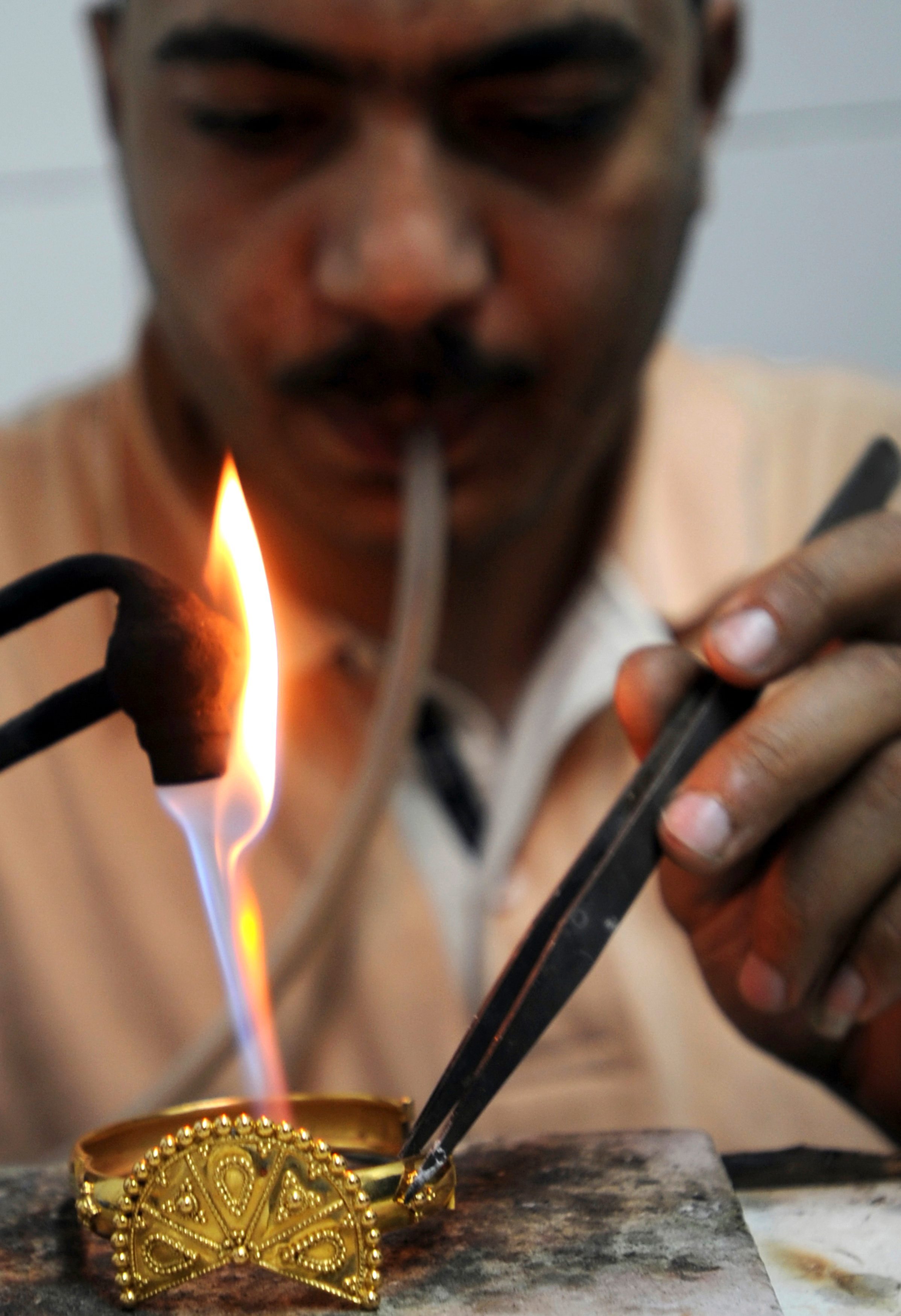
In the 20th century, almost all Egyptian Jews lived in either Cairo or Alexandria, and they dominated the gold markets. The trade was particularly concentrated among Karaite Jews, a minority off-shoot community which today exists mostly in Israel. Over the course of the mid-20th century, after the creation of the State of Israel in 1948, and the rise of Arab pan-nationalism in Egypt under President Nasser in 1954, the Jewish population of Egypt more or less vanished, as political tensions forced many to flee or face arrest and discrimination. There might have still been a few Jewish goldsmiths in 1967, when the Six Day War broke out between Israel and several surrounding countries including Egypt, but by then the country had long become inhospitable to its Jewish citizens, and the few remaining Jews were expelled. By 1970, no Jewish goldsmith shops were still operating. Today, fewer than 10 Jews of the once 85,000-strong community in 1950 remain. Where once the goldsmith quarter of Cairo rang out with school boys selling kosher snacks for lunch, today the Jewish presence lives on only in the few scattered, Hebrew-derived phrases still in use.

The story of why this language remains in Egypt, long after the community in which it originated fled, is a story of many theories and few answers.
The entrance to the Cairo goldsmith quarter is easy to miss. Just off the Khan el-Khalili market, right by the Al-Azhar mosque, the seemingly nondescript side street quickly gives way to a cluster of alleyways, hosting hundreds of family-owned stalls and small jewelry shops. The storefronts glitter with everything from mass-produced gold bangles and pendant necklaces to rare, finely worked earrings, vases, brooches, and decorative gold statues.

Interspersed within the heavy retail businesses are the goldsmith stalls, mostly owned by Coptic Christians. Many of the shops have pictures of Christian saints on the walls. They often hang alongside a portrait of the shop founder, usually the father or grandfather of the current shop owner. The stalls might technically have addresses, somewhere, but most are known simply by sight and name.
In the early 1900s, the goldsmith quarter was also home to Cairo’s large Jewish population, which had resided in Egypt for millennia. The departure of the Jewish community in the 1950s and 1960s was swift and sudden, leaving many Jewish goldsmiths to abandon their businesses or hastily gift them to their non-Jewish assistants and colleagues. Few shop owners operating today will openly discuss this period. It’s not known what percentage of shops in the 1950s would have been Jewish-owned.

The evolution of an insider trade language is not unique to the Egyptian Jewish goldsmiths, but one example of a global trend. Scholar Miriam-Esther Wagner notes that the rise of these linguistic phenomena in Jewish communities is widespread, given the preponderance of such languages in minority communities in general. “In the case of Jewish traders, high literacy in a second language, Hebrew, unknown to the majority group made it much easier to develop such common coded language,” she says, adding that such coded language also helped foster a group identity.
In her book, Merchants of Innovation, Wagner, a professor at the University of Cambridge who began her career studying mercantile correspondence in Yiddish and Judeo-Arabic, discusses how dealers of expensive goods developed their own languages. She notes that the pragmatic focus of writing in trade contexts—which was often unconcerned with literary flourishes and instead existed somewhere between written and spoken language—meant traders were often the first to introduce spoken variables of language into the written word. This linguistic trendsetting was particularly true of trades that cultivated a group identity—goldsmiths being a prime example.
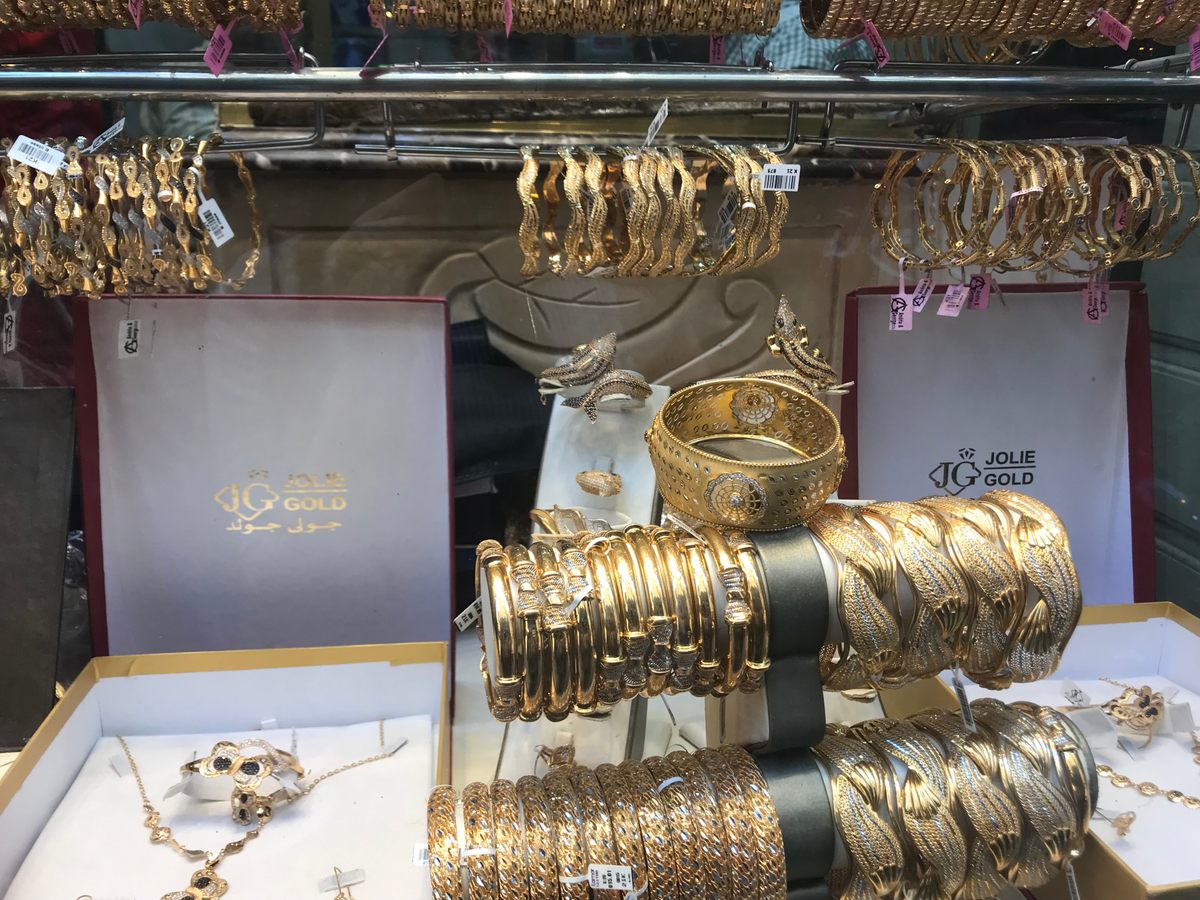
“Different kinds of traders develop particular speech forms to delineate their group from outsiders, to keep trade secrets hidden from outsiders, and also to create a linguistic group identity,” she writes in an email. “Horse traders in Germany developed their own jargon, the so-called rotwelsh, partially based on Yiddish and other jargons, in order to keep trade secrets. Jewish traders of Prague developed codes to guard secrets in Yiddish.”
But horsetraders in Germany today are not known to still be speaking rotwelsh, which is a Germanic-based language influenced by both Yiddish and Judeo-Latin, an ancient Jewish language spoken in the Roman Empire. Presumably, the language moved on with the Jews.
This is what has made the goldsmith trade speak in Egypt so intriguing to scholars: The lingering use of these phrases long after the departure of the Jewish community.

Some scholars have emphasized the preponderance of Karaite Jewish goldsmiths in the industry as a critical factor. As it turns out, the Karaite Jews had a unique relationship to Arabic, which some posit might be one reason their trade phrases integrated so widely within the broader, non-Jewish goldsmith population.
“There were not many Jews in Egypt who used Arabic exclusively for every aspect of their lives,” explains Katharine Halls, a scholar of Egyptian Jewry and Arabic-to-English translator who has lived on and off in Egypt for several years during her career. “Egyptian Jews often spoke French, like many wealthier Egyptian families, or Alexandria it was Italian for a while, but the Karaites were generally mono-lingual in Arabic, which made them virtually unique among Jews in Egypt.”

Karaite Jews also rarely spoke Hebrew outside the synagogue. This means that the use of Hebrew phrases, by the early 20th century, was likely not an organic development by goldsmiths who spoke both languages interchangeably, but already an established part of the trade lingo, which likely entered the trade centuries earlier with Jewish communities that still spoke in Hebrew in everyday life. Over time, the Hebrew phrases of these communities would have developed into new forms, and gained an identity as simply trade terms, mixing with other trade-specific jargon used by the Egyptian goldsmiths to refer to their tools, metals, and various trappings of the profession. The Karaite Jewish goldsmiths likely would have freely trained their non-Jewish staff in the use of such terminology.
But even such a timeline remains, at best, conjecture, particularly in an industry that remains somewhat guarded.
Halls had first come across the idea of the goldsmiths’ use of Hebrew in her academic research. She studied Arabic and Hebrew at the University of Oxford and later moved to Cairo, where she was curious about what remained of Jewish life and visited as many historical sites as she could. It was only by coincidence that she found out the goldsmiths’ argot was not just a historical curiosity, but still in use.
“I had a fair bit of silver jewelry that I wanted to get gold-plated,” she says, explaining that it was much easier, and cheaper, to gold-plate jewelry in Egypt. After asking around, she came across a tiny shop run by two brothers, and ended up returning again and again to have her jewelry fixed. As they resized her rings and fixed broken necklace catches, she chatted to them about their business and their lives. Eventually she asked about the Jewish goldsmiths and their secret language.
“Sure, we still use that,” one of the brothers told her, and began reeling off a list of numbers and phrases that they might use to point out an untrustworthy customer, or surreptitiously discuss prices. Some were unfamiliar to Halls, but others were clearly based on Hebrew roots and numbers. She asked them more questions. Like most goldsmiths, the brothers had heard stories, of course, about the Jews, from the older generations. But they were too young to remember much themselves.
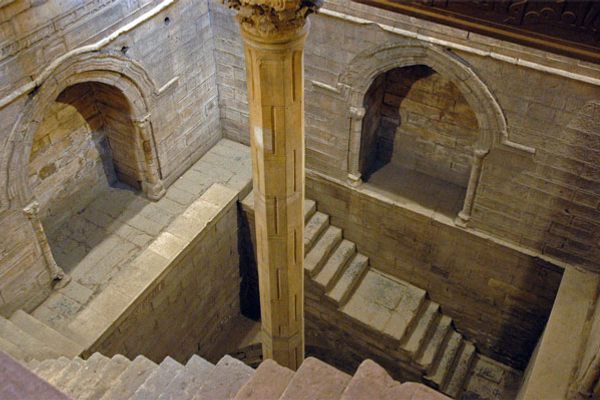
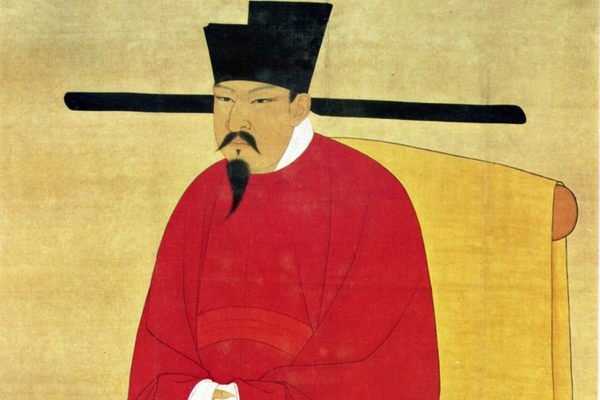
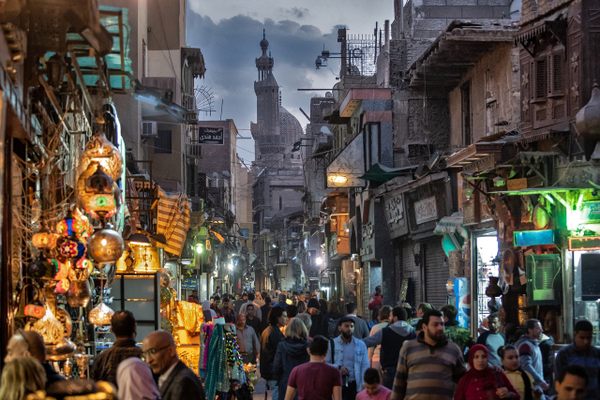
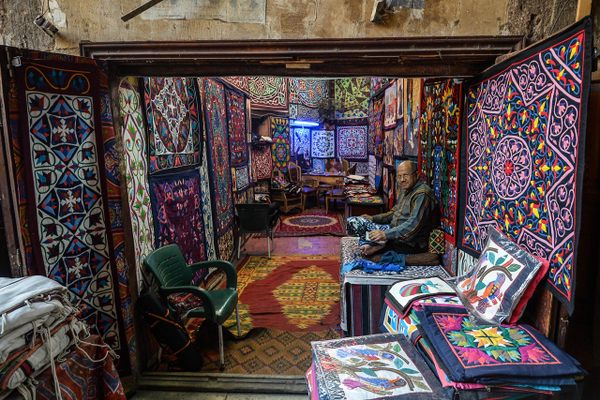




Follow us on Twitter to get the latest on the world's hidden wonders.
Like us on Facebook to get the latest on the world's hidden wonders.
Follow us on Twitter Like us on Facebook